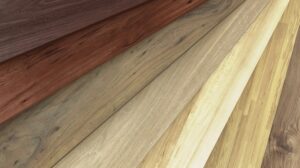If you are preparing to install new baseboard in your home alone as a DIY project, it can seem like a relatively easy task. While it isn’t the hardest DIY project you’ll take on, installing baseboard properly can take a bit of patience and a bit of skill depending on the surrounding flooring. Ready to get started on your DIY baseboard installation?
The Basics of Baseboard Installation
Baseboards are installed before flooring typically, and if you have a choice that is when you should choose to install. Once the baseboards are installed, they need to be finished with a wood stain or paint, so the task is much simpler if you aren’t worrying about ruining your brand new flooring. Start by cutting the baseboard to the proper lengths—remember to measure twice and cut once.
Remember that the baseboard is going to rest over the flooring that is installed, so it should be installed with the bottom edge even with the bottom edge of the drywall. You can do this easily with spacer boards laid on the floor to guide you to the right height. Once the baseboard is installed, you can remove the spacer for your flooring installation.
DIY Baseboard Installation Before Carpet
Installing baseboard before carpet is much simpler, so use the method above to install (placing the bottom edge even with the bottom of the drywall). However, sometimes this isn’t possible if the drywall was not properly spaced above the wall during construction. In that case, use the carpet manufacturer’s recommendations for baseboard mounting. Typically, manufacturers suggest leaving 1 inch to account for the padding and the thickness of the carpet. Nail the baseboard in with 2-inch finish nails or use an air-powered pin nailer if you have a full DIY toolbox at your disposal.
DIY Baseboard Installation After Carpet
Installing baseboard after carpet is a bit trickier. If you do not want to install quarter round or base shoe, you should install the baseboard so that it is flush with the surface of the carpet. You can use a level to help make sure that the top edge of the baseboard is even. Make sure to nail the baseboard into the wall instead of the floor.
Fisher Lumber for All of Your DIY Home Improvement Project Needs
Fisher Lumber and Hardware has served homeowners and contractors in the Maryland, Washington, D.C., and Northern Virginia areas since 1894. We have excellent lumber, all of the building materials you need, top-notch tools, and the expertise to help you pick the right supplies for your project. Give us a call at 301-424-6500 or visit us online for more information. To see more tips for your DIY project, visit us on Facebook, Pinterest, Google+, Houzz, and Twitter!

